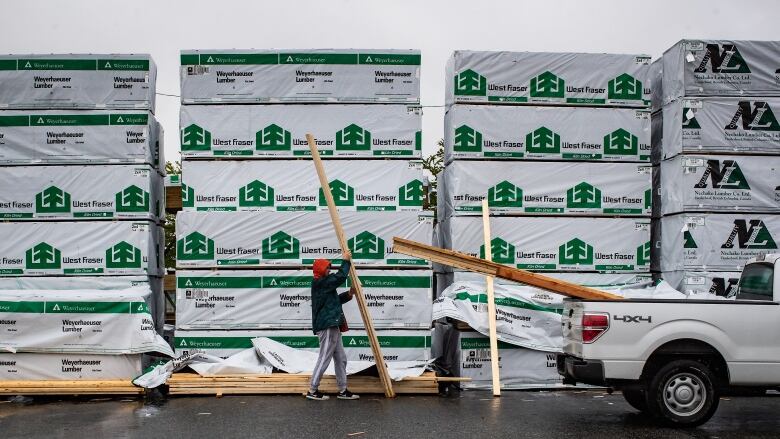'Staycation syndrome' driving lumber market challenges, says Sask. business prof
'If you've locked in now with your contractor ... consider yourself fortunate,' says Edwards School dean

A lumber shortage may be an unexpected result of the COVID-19 pandemic.
It's being driven by what aSaskatoon business professor refers to as "staycation syndrome."
More people are spending time at home across Canadaduring the pandemic, and they're doing more work around their houses things like renovations or building new fences. That's impacting lumber supplies and, in turn, prices, saysKeith Willoughby, dean and professor of management science at the Edwards School of Business in Saskatoon.
"We've never, in a society, seen anything like this before, where many of us are now working from home. You're seeing a dramatic increase in the demand of individuals wanting to do those home projects."
He said he's never seen the kind of demand and price increasesthe North American lumber industry is experiencing right now.
Willoughby noted there are other factors at play beyond just the fact people are spending more time at home.
People who may have normally gone on vacation haven't been able to because of pandemic travel restrictions, and that means they now have extra moneyto spend on things like home renovations or improvements, he said.
As well, he notesinterest rates arerelatively low right now, which may also encourage people to take on projects.
Things are changing on the supply side, too, he said.
"There are some reports that, at least in the initial stage of the COVID pandemic, there were some sawmills that were shut down temporarily," Willoughby said.
Some sawmills in B.C., he said, had to be closed because of beetle infestations or wildfires affecting forest supplies.
Looking at historical market prices, Willoughby said the market is typically stable between August and December.
But inthe past week alone, he said some lumber prices have increased between eight and 10per cent. Month-to-month, he said some increased about 30 per cent. Year-to-year, he said prices have increased by nearly 100 per cent.
"If you've locked in now with your contractor or your project, consider yourself fortunate," he said.
"If you're looking ahead and thinking you might want to, say, [start a project] later on this year or later on in the summer, you may want to rethink that strategy."
Willoughby said projects large and small alike are going to endure price changes.
As for how long that could last, he said there's a lot of uncertainty in the situation due to the COVID-19 pandemic.
Supplies 'flying off the shelves': contractor
For now, Gerald Audit, with Impact Construction in Saskatoon, says he's having problems finding supplies for his jobs.
"We're looking at building a fence not too far away and we're concerned about being able to get the products, because it seems to be flying off the shelves lately," Audit told CBC Radio.
The shortage impacts more than just lumber.
Audit said trusses are an example of a product that's harder to get made in a timely fashion now.
Drywall could be tricky to obtain as well.
"Drywall, there's a shortage when it's slow," he said. "I can't imagine what it's going to be like now."
With files from Saskatoon Morning












_(720p).jpg)


 OFFICIAL HD MUSIC VIDEO.jpg)
.jpg)



























































































